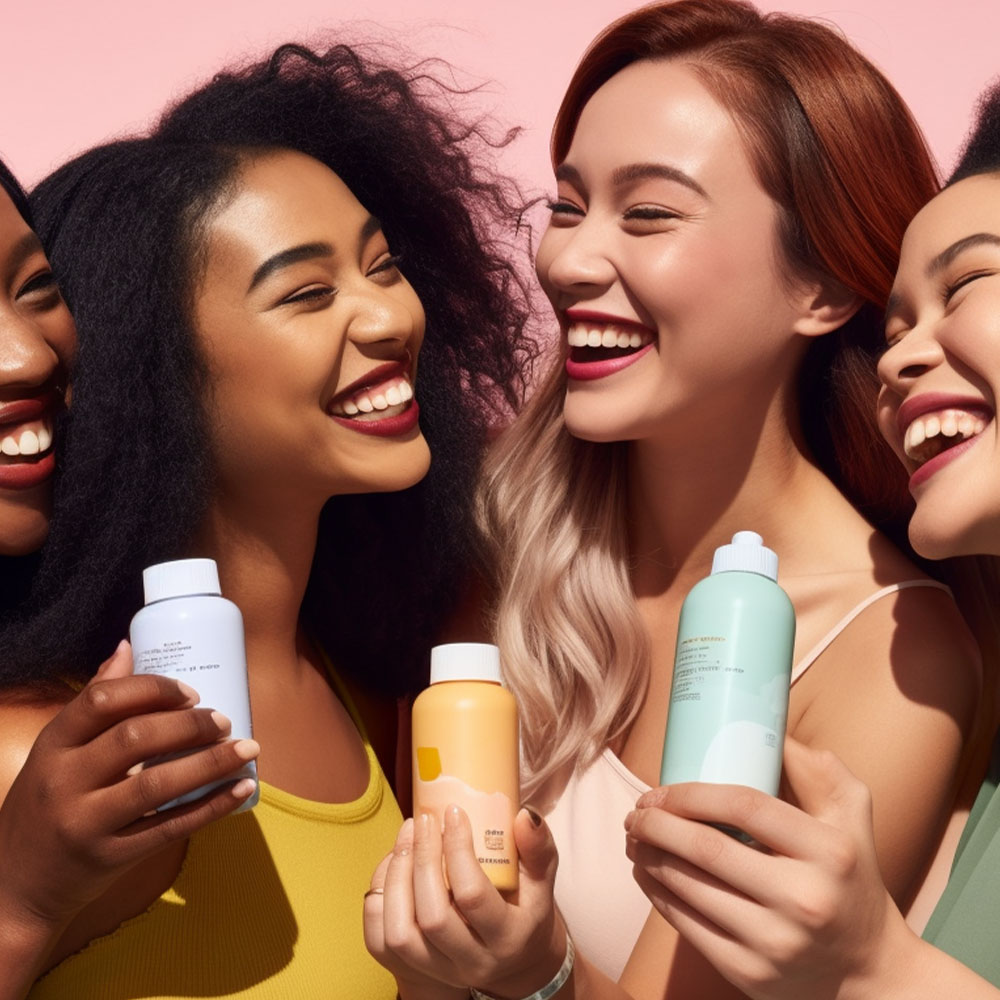
The importance of entering new markets is increasing sales and revenue and expanding your brand’s reach and influence in today’s competitive market. In addition, with the rise of social media and e-commerce platforms, it has become easier to connect with consumers worldwide, making globalization an essential step for any successful beauty brand.
However, it takes more than translating your product information into different languages to succeed in new markets. It would be best to tailor your marketing strategies based on cultural differences and consumer preferences unique to each country. In this article, we will explore the key factors to consider when developing global marketing strategies for beauty brands looking to expand their presence in new markets. From understanding local trends and customs to building solid relationships with influencers and distributors, we’ll cover everything you need to know to enter international waters successfully.
Identifying Potential Target Markets
Did you know the global beauty industry is expected to reach $716.6 billion by 2025? This staggering statistic highlights the potential for growth and profit in this market. It’s crucial to identify potential target markets where your brand can thrive.
Market segmentation is one approach to identifying these potential targets. We can better understand their needs and wants by dividing large consumer groups into smaller segments based on demographics, behavior, or psychographics. For example, if our brand specializes in anti-aging products, focusing on women aged 40 and above would be a logical starting point.
However, cultural sensitivity cannot be overlooked when entering new markets. Understanding local customs and values is essential to avoid offending consumers or appearing tone-deaf. In addition, it’s important to conduct thorough research before launching any campaigns or product lines in a foreign country.
In addition to demographic and cultural factors, competitive analysis plays a significant role in identifying potential target markets. Analyzing competitors’ strengths and weaknesses in specific regions can provide insights into gaps in the market that our brand can fill. With careful consideration of all these factors, we can identify promising target markets with high growth potential for our brand’s expansion efforts.
Conducting Market Research
I’m gathering consumer insights to develop global marketing strategies for beauty brands entering new markets. I’m researching current trends to understand how consumers perceive beauty products in different regions. I’m analyzing market trends to determine which regions are the most profitable for our brand. I’m also seeking opportunities to expand our reach in these new markets.
Gathering Consumer Insights
It is crucial to gather consumer insights before entering new markets. Analyzing the potential customer’s preferences in the target market can provide valuable information on how to tailor products and marketing campaigns. This means conducting thorough research on customer behavior, purchasing patterns, and product trends.
Understanding culture is also essential when gathering consumer insights. Culture influences what consumers value, their attitudes toward specific products or ingredients, and even their color preferences. A thriving global marketing strategy considers these cultural nuances and adapts accordingly.
To gather consumer insights effectively, it’s essential to use qualitative and quantitative methods. Surveys and focus groups are valuable tools for understanding consumer behaviors and preferences. Social media monitoring can also provide real-time feedback on brand perception and sentiment.
In conclusion, gathering consumer insights is essential in developing a successful global marketing strategy for beauty brands entering new markets. By analyzing preferences and understanding culture through qualitative and quantitative methods, brands can create tailored products and campaigns that resonate with local consumers.
Analyzing Market Trends
Keeping up with market trends is crucial to staying ahead of the competition. Analyzing emerging markets and consumer preferences allows us to identify opportunities for growth and innovation. We can adjust our product development strategy by understanding what products or ingredients are gaining popularity.
In addition to identifying market trends, analyzing them also helps us assess potential risks that may impact sales performance. For instance, if certain ingredients are becoming less popular due to safety concerns or environmental issues, it’s essential to consider how this might affect customer demand for our products. As such, regularly monitoring market trends gives us valuable insights on when to pivot and adapt.
Analyzing market trends also guides our decision-making process regarding pricing strategies and distribution channels. For example, in some markets where consumers prefer affordable products over luxury items, we may need to adjust pricing strategies to not price ourselves out of the market. Similarly, by understanding which distribution channels have high penetration rates in each country or region, we can make informed decisions about where and how to distribute our products effectively.
Ultimately, analyzing market trends enables us to develop more comprehensive and effective global marketing strategies that align with customer needs and industry movements. With these insights, we can create innovative campaigns that resonate with local audiences while remaining true to brand values.
Adapting To Local Customs And Traditions
After conducting thorough market research, a beauty brand must adapt to local customs and traditions to successfully enter new markets. Cultural sensitivity is key in this process as it shows respect for the local community and their way of life.
To begin with, localization techniques can be used to tailor products to suit the needs of specific markets. This can involve changing packaging designs or product formulations to align with cultural preferences. For example, skin whitening products are popular in many Asian countries, so brands may need to adjust their offerings accordingly.
Furthermore, understanding local customs, such as religious practices or holidays, can help a brand connect with consumers. By incorporating these traditions into marketing campaigns or product launches, a sense of inclusivity and relatability can be established.
It’s important to note that while adapting to local customs is crucial, it should never come at the expense of compromising a brand’s values or ethics. On the contrary, brands should always remain true to themselves while finding ways to integrate into different cultures respectfully.
- Develop a team specifically dedicated to researching and understanding cultural nuances.
- Consider partnering with local influencers or celebrities with an established following in the target market.
- Test out localized versions of products before committing fully.
- Continuously gather feedback from customers to make necessary adjustments along the way.
Beauty brands can successfully navigate new markets by embracing cultural sensitivity and utilizing effective localization techniques while respecting and celebrating diverse cultures worldwide.
Developing Product Offerings
Product differentiation is essential for beauty brands that want to succeed in new markets. Before entering a market, competitive analysis is essential to understand what the target audience needs and wants from their beauty products. This will inform your product development process so that you can create unique offerings that stand out from competitors.
One way to differentiate your brand’s product offerings is by incorporating local ingredients or cultural practices into your formulations. For example, if you’re launching in Japan, consider using traditional Japanese skincare ingredients such as sake or green tea. By doing this, you’ll appeal to consumers who are proud of their culture while providing them with practical and innovative products.
Another way to differentiate your product offerings is through packaging design. Consumers often make purchasing decisions based on how visually appealing a product looks on the shelf. Therefore, eye-catching packaging design can be an effective marketing tool for attracting new customers.
In addition, offering customizable options can further set your brand apart from competitors. By allowing customers to personalize aspects of their beauty routine – such as choosing specific scents or shades – they feel more invested in the brand. As a result, they are more likely to become loyal customers.
By focusing on product differentiation during the development phase, beauty brands can increase their chances of success when entering new markets. With thorough competitive analysis and creative thinking around ingredient sourcing, packaging design, and customization options, global marketers can offer truly innovative products that resonate with consumers worldwide.
Creating An Effective Brand Image
Creating a compelling brand image is crucial when entering new markets. Your brand’s image should be visually appealing and captivating enough to attract your target audience.
Imagine walking into a bustling marketplace where various vendors sell their products. What would make you stop at one particular vendor’s stall? It could be the vibrant colors or unique packaging that catches your eye. This is precisely what a compelling brand image can do for your product.
To create an even more substantial impact, collaborating with influencers who align with your brand values can help increase awareness and credibility in your target market. However, navigating cultural differences in branding is crucial to avoid miscommunications or misunderstandings that may negatively affect your brand’s reputation.
Here are five tips on how to create a compelling brand image while navigating cultural differences:
- Research local customs and traditions before launching your campaign
- Translate all content accurately and effectively
- Utilize diverse models and spokespersons in advertising campaigns
- Use social media platforms popular in the local market to reach wider audiences
- Incorporate feedback from local consumers to tailor future campaigns
By following these guidelines, you can effectively create a strong brand image that resonates with your target audience while respecting their culture and beliefs.
Building a successful brand takes time, effort, and strategic planning. Keep innovating and adapting as necessary to stay ahead of the competition.
Building Relationships With Local Influencers
Now that we have established the importance of creating a compelling brand image, we must focus on building relationships with local influencers. Collaborating with influencers is a powerful way to increase brand awareness and credibility in new markets. In addition, these individuals have a large following on social media platforms and can help you reach your target audience.
To effectively collaborate with influencers, you must first identify those who align with your brand values and aesthetics. This requires extensive research into their content, engagement rates, and partnerships. Once you have identified potential collaborators, approach them with a proposal that outlines how working together will benefit both parties.
Leveraging social media is also crucial when building relationships with local influencers. By sharing their content and tagging them in posts, you show appreciation for their work and increase your brand’s visibility. Additionally, hosting giveaways or offering exclusive discounts through influencer collaborations can further incentivize followers to engage with your brand.
In summary, collaborating with local influencers is essential to global marketing strategies for beauty brands entering new markets. Identifying compatible partners, approaching them professionally, and leveraging social media is critical to successful influencer campaigns. Remember to continually track metrics such as engagement rates and conversions to ensure that these collaborations drive meaningful results for your business.
Establishing Distribution Channels
Establishing distribution channels is one of the most crucial steps in entering a new market. Identifying how products will reach customers and what approach will be taken to maximize sales is essential.
Partnering with local retailers can be an effective way to establish distribution channels, especially for beauty brands. Local retailers have established trust within the community and often provide personalized service that larger chains cannot match. By partnering with local retailers, you can gain access to their customer base while building relationships with important players in your target market.
Another strategy for expanding distribution channels is through e-commerce. With the rise of online shopping, it’s more important than ever for beauty brands to have a solid online presence. E-commerce expansion strategies could include creating an online store or partnering with popular e-retailers like Amazon or Sephora.
When considering these options, it’s essential to consider cultural differences that may impact buying behaviors. For example, some cultures prioritize face-to-face interactions over digital communication. In these cases, partnering with local retailers may be more effective than relying solely on e-commerce.
Ultimately, establishing distribution channels requires careful planning and consideration of traditional retail partnerships and e-commerce expansion strategies. However, beauty brands can successfully enter new markets and grow their global footprint by considering cultural nuances and working closely with local partners.
- Create localized marketing campaigns.
- Offer exclusive promotions for customers who shop at partnered retailers
- Conduct market research on preferred purchasing methods in different regions
- Train staff at partner stores on product knowledge
- Utilize social media influencers from targeted regions – to promote the localized marketing campaigns and increase brand awareness.
Crafting Compelling Marketing Messages
Crafting compelling marketing messages that resonate with new markets is essential. One must consider language and cultural nuances to create messaging that captures consumers’ attention effectively. It’s not just about translating words; it’s about understanding how different cultures perceive beauty and tailoring messaging accordingly.
Language considerations are essential in creating effective marketing messages for new markets. It’s crucial to ensure that translations are accurate and culturally appropriate. However, even beyond translation, adapting the tone and style of messaging can make all the difference in engaging with local audiences. For example, using idioms or slang specific to a region may help establish a connection with potential customers.
Cultural nuances also need careful consideration when crafting marketing messages for new markets. For example, understanding what beauty means to people from various regions worldwide allows marketers to develop campaigns that resonate with them on a deeper level. In addition, marketers can build trust and affinity with these communities by incorporating elements specific to their culture into campaigns, such as traditional attire or music.
Leveraging social media and influencer partnerships has become increasingly influential for global beauty brand marketing strategies. These platforms give brands access to millions of consumers worldwide, allowing them to tailor content based on location-specific trends and preferences. In addition, partnering with local influencers who embody a company’s core values helps build credibility while enabling brands to tap into established networks already trusted by their target audience.
Crafting compelling marketing messages requires sensitivity towards language considerations, cultural nuances, and leveraging social media and influencer partnerships – all vital components of successful global beauty brand strategies. With well-designed campaigns tailored specifically for each market they enter, companies can connect deeply with customers across borders without losing sight of their unique identities.
Measuring Success And Adjusting Strategies
Crafting compelling marketing messages is the first step in a successful global marketing strategy. After launching your brand, it’s crucial to analyze metrics and data to determine your previous efforts’ effectiveness. Without this information, you’re flying blind – unaware of what worked and what didn’t.
Analyzing metrics should be ongoing throughout each stage of entering a new market. In addition to measuring traditional KPIs such as conversion rates and customer acquisition costs, it’s also essential to track social media engagement and other indicators of brand awareness. Doing so will give you a complete picture of your company’s performance in a given location.
Once you’ve analyzed the relevant data, it’s time to implement changes based on your findings. This could involve tweaking your messaging or adjusting your advertising spending to reach different audiences more effectively. Whatever actions you take should be guided by concrete insights gleaned from analyzing metrics rather than guesswork or intuition.
Of course, implementing changes can be risky – there’s no guarantee that any particular adjustment will yield better results than what came before. However, without making modifications over time, brands risk stagnating or losing relevance altogether. On the other hand, by carefully monitoring their performance and experimenting with different approaches, beauty companies can stay ahead of trends and continue growing in global markets.
Staying Ahead Of Industry Trends
Staying ahead of industry trends is crucial. It’s not just about keeping up with the latest fads – it’s about anticipating what consumers want and delivering it before anyone else. This requires an acute understanding of consumer behavior and a willingness to take risks and experiment with new ideas.
One way that we can stay ahead of the curve is by collaborating with influencers. These individuals have built loyal followings on social media platforms like Instagram and TikTok, and they can help us reach new audiences in ways that traditional advertising cannot. By partnering with influencers who align with our brand values, we can tap into their credibility and authenticity to build trust with potential customers.
Another critical strategy is to utilize social media trends. Platforms like Instagram constantly evolve, so we must be agile enough to adapt our content strategies accordingly. For example, if short-form video content becomes more popular, we may want to shift resources away from longer videos or static images. By monitoring social media trends closely and experimenting with different formats, we can keep our content fresh and engaging for our followers.
Staying ahead of industry trends requires combining creativity, data analysis, and strategic thinking. We must be willing to take risks and try new things while being mindful of what has worked well. By effectively collaborating with influencers and utilizing social media trends, we can position ourselves as leaders in the beauty industry – always one step ahead of the competition.
Conclusion
We can tell you that entering new markets is no easy feat. However, with careful planning and execution, it can be done successfully. It’s ironic how the things we take for granted in our culture may not translate well to others. This is why identifying potential target markets and conducting market research are crucial to creating effective global marketing strategies.
Adapting to local customs and traditions is crucial to winning over consumers in new markets. Developing product offerings that cater to their unique needs and preferences will further help establish your brand as one they can trust. Crafting compelling marketing messages that resonate with them and establishing distribution channels will ensure your products reach the right audience at the right time. Most importantly, measuring success and adjusting strategies will keep your brand ahead of industry trends. Remember, there’s always room for improvement!









